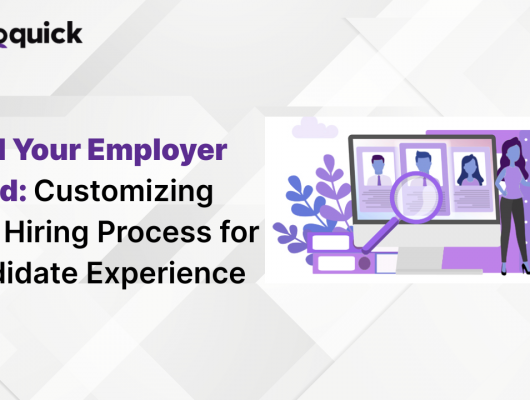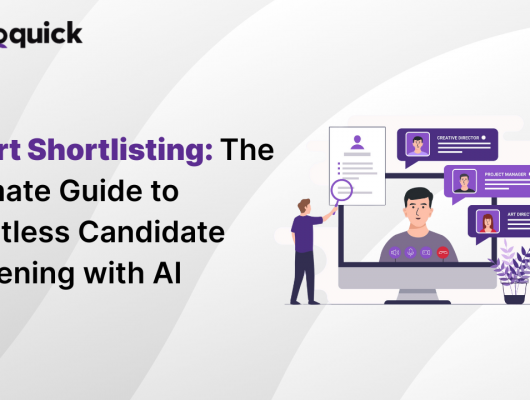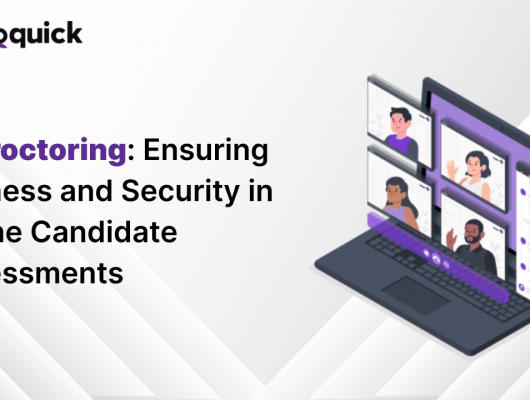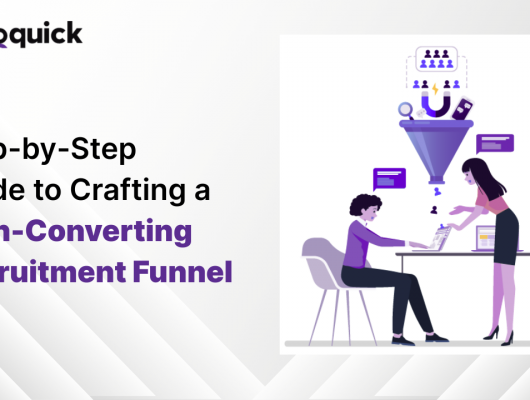You know, attracting and keeping top talent? It feels like that landscape is just constantly shifting under our feet. Leaders today really are navigating some complex stuff. You’ve got intense competition for skilled folks, plus figuring out all the market dynamics. Honestly, success isn’t really about just filling open roles as fast as you can anymore. It needs something more, a more thoughtful, forward-looking kind of approach. Building a strong team, one that actually sparks innovation and helps hit those big strategic goals? That demands more than just your standard hiring playbook.
This is where having a strategic talent acquisition focus becomes, well, incredibly important. It’s kind of the art and the science behind finding, attracting, choosing, and bringing in the right people at the right time. Getting talent acquisition management right, I think, is becoming a core skill for any leader who’s serious about sustainable growth. When you have a clear strategy, you’re not just reacting when someone leaves or a new role opens up. You’re actually building the team you’re going to need down the road, proactively.
So, in this guide, we’re going to dive into five key talent acquisition strategies that I believe every leader really ought to get a handle on and, more importantly, put into practice. Mastering these approaches can really transform your hiring function. It moves it from feeling maybe like just a cost center to actually being a powerful engine for competitive advantage.
By the time we finish up here, hopefully, you’ll have some concrete ideas to really step up your talent acquisition game and start building that workforce of tomorrow. I mean, you see reports, like one from Deloitte, pointing out that high-performing organizations are really prioritizing strategic workforce planning and talent acquisition. It just feels true when you see it in action, doesn’t it? You can often find more insights on global talent trends in big reports like that one – maybe check out something like the Deloitte Global Human Capital Trends report if you’re curious.
Understanding these strategies is pretty critical. They go way beyond just posting a job ad and sifting through resumes, honestly. They involve really looking closely at your brand, digging into the data, building relationships with potential candidates, and making smart use of technology. This kind of strategic focus helps make sure every single hiring decision lines up with your bigger business goals. It just builds a stronger, more resilient organization in the long run.
Why Strategic Talent Acquisition is Non-Negotiable for Business Growth
Look, moving from just filling a spot to actually doing strategic talent acquisition? It’s not really a nice-to-have anymore. It feels like a must-have. Things move so fast today, and your people? They really are your most valuable asset. The quality of your team genuinely affects whether you can innovate, how well you compete, and if you’re truly delivering value to customers.
When you’re just reacting to hiring needs, you miss opportunities. You sometimes end up with hires that aren’t quite right, and frankly, it costs you more in the end. A strategic talent acquisition strategy, on the other hand, actively connects your recruitment efforts back to the company’s mission and where you need to be in the future. It helps ensure you’re not just filling seats, but actually building a high-performing team with the right skills and, importantly, the right cultural fit. Taking that proactive step really helps future-proof your organization, I think.
And honestly, poor hiring decisions? They are just incredibly expensive. It leads to less gets done, higher training costs, it can really mess with team morale, and you often see higher turnover. Effective talent acquisition management really helps minimize these risks. It helps create a process that you can repeat, you can measure, and that consistently brings in higher quality talent.
Leadership, by the way, plays a huge part in pushing this strategic shift forward. Leaders need to champion how important talent acquisition is, make sure there are enough resources, and actually look at TA numbers alongside other business performance indicators. When leaders are involved, it really signals that talent is a top priority. This kind of commitment from the top really empowers the TA teams to implement these more impactful strategies.
The Top 5 Talent Acquisition Strategies for Leaders
Good leaders understand that talent acquisition isn’t just something HR does. It’s a company-wide thing, really, needing leadership oversight and constant fine-tuning. The five strategies we’ll look at now? They’re sort of the foundation, I guess, of really effective, modern talent acquisition management. Getting good at these will genuinely give your organization a big leg up when everyone’s competing for talent. And they kind of build on each other, creating a more complete picture.

Strategy 1: Cultivating a Magnetic Employer Brand
In a really competitive job market, what people think about your company as a place to work? That’s absolutely crucial. A strong employer brand is like a magnet, I suppose, drawing in great candidates who actually connect with your values and the vibe of your culture. It tells people what it’s really like to be part of your team. And this isn’t just marketing talk, really. It’s built on genuine experiences your employees are actually having.
An authentic employer brand starts with something called an Employee Value Proposition, or EVP. It sounds a bit formal, maybe, but it’s basically the unique package of things employees get in return for their skills and effort. Your EVP includes salary, benefits, chances to grow their career, the work environment, and the company culture. Figuring out your EVP means really understanding what your current people value most. You can find this out through surveys, talking in focus groups, or just good old internal communication.
Using social media is pretty essential for getting your employer brand out there. Platforms like LinkedIn, Glassdoor, Instagram, even TikTok sometimes, can really show off your company culture, share what employees are saying, and give people a peek behind the scenes. It helps if you encourage your employees to share their positive experiences online – that authentic voice is incredibly powerful, builds real credibility.
When you’re trying to measure if your employer brand is working, you can look at things like:
- How many applicants actually finish the process?
- Where are your best applicants coming from?
- What kind of engagement are you seeing on social media when you talk about jobs or culture?
- What are your ratings and reviews like on sites like Glassdoor?
- How much traffic is going to your careers page?
- And what’s your cost per applicant like, compared to the quality you’re getting?
Having a good employer brand typically means it costs you less to hire people and takes less time. You also tend to get better quality candidates who stick around longer. Investing in your brand really does pay off big time in the long run. It creates this nice cycle: a great culture attracts great talent, and that great talent helps make the culture even stronger.
Strategy 2: Implementing Data-Driven Recruitment & Analytics
Okay, relying purely on gut feeling? It can only get you so far, right? Maybe it has its place, but it’s really not enough for modern talent acquisition management. Data and analytics, though? They give you objective insights. You need those to really fine-tune your processes, spot what’s not working, and make decisions based on facts. Moving towards using data more is, I think, just fundamental for leaders who want to be strategic about TA. It helps you turn assumptions into actions you can actually back up.
Key metrics are kind of like taking the pulse of your TA operations. Some essential ones that leaders should probably keep an eye on include:
- Time-to-Hire: How long does it actually take from deciding you need someone to getting them to say yes to the offer?
- Cost-per-Hire: What’s the total cost involved in filling a role?
- Quality-of-Hire: This one’s maybe a bit trickier, but it’s about how well new hires perform, how productive they are, and if they stay with you.
- Source-of-Hire: Where did the best candidates actually come from?
- Candidate Experience Score (CSAT): Are candidates feeling good about the process, or not?
- Diversity Metrics: Are you seeing representation throughout the hiring pipeline and in who you hire?
Using data lets you really see where things might be getting stuck in your hiring funnel. Are candidates dropping off after that first application step? Is scheduling interviews taking way too long? Analytics can help you identify those specific problems. Then you can actually do something targeted to fix things and become more efficient.
Recruitment analytics tools and dashboards really help pull all this information together. They make it easier to see trends, maybe even predict future hiring needs based on what’s happened before, and see which sourcing channels are actually working. Using tools that bring together candidate info and process metrics just makes reporting so much simpler. HireOquick, for instance, has Candidate Management features that can help you track people through the pipeline and give you those valuable data points for analysis. It really helps build a more robust picture for recruitment analytics. When you start with analytics, it really helps to figure out your key performance indicators (KPIs) right at the beginning.
Analyzing data also helps you tweak where you’re looking for people. If a certain job board or maybe your employee referral program is bringing in really good hires who stay? You probably want to put more effort there. On the flip side, data can clearly show you which channels just aren’t working, so maybe you stop using them. Data-driven insights, I’ve found, really drive continuous improvement in the process.
Strategy 3: Crafting an Exceptional Candidate Experience
The experience candidates have? It’s honestly not just an HR thing anymore. It’s a huge part of your employer brand and your business reputation, period. In today’s connected world, candidates talk. They share their experiences widely, whether they were good or bad. A really poor experience can scare off top talent, hurt your brand, and could even impact how customers see you. But a good experience? That can turn candidates into advocates for your company, even if they don’t get the job.
Mapping out the candidate journey can help you really visualize every single interaction a candidate has with your company. This journey actually starts way before they even apply – maybe they saw your brand online or heard about you from an employee. It keeps going through applying, screening, interviews, negotiating an offer, and finally onboarding. Every single step is a chance to leave a positive mark.
Improving communication and being transparent? That feels vital. Candidates really appreciate getting timely updates on their application status, knowing clearly what the timeline for the process looks like, and getting constructive feedback (even if they weren’t chosen). Try to set realistic timelines and really stick to them. Even if you’re using automated messages, they should still feel helpful and, well, personal if possible.
Making the application and interview process smoother really cuts down on frustration for everyone. A super complicated, really long application form? That can easily turn off talented individuals. Using technology to make applications simpler and scheduling interviews more efficient is key, I think. For example, HireOquick’s Candidate Management features can help streamline the application process and make communicating a lot simpler, contributing to a much smoother experience for the candidate. Offering flexible interview options, like video or in-person, also helps make the experience better.
Handling rejections with respect is paramount, truly. A polite, timely, and maybe even constructive rejection note can leave a candidate feeling positive about your company, even if things didn’t work out this time. They might just apply again later or maybe refer someone else. Just remember, the person who was a candidate today could be a customer or an employee tomorrow.
Strategy 4: Building Proactive Talent Pools & Nurturing Relationships
So many organizations seem to just operate in a reactive hiring mode. It feels like they’re scrambling to fill positions only once they’re actually empty, right? Strategic leaders, though, shift to building pipelines proactively. This means trying to figure out potential talent needs based on what the business expects to happen, and then building relationships with those candidates before you even have a specific role open. This approach definitely shortens how long it takes to hire someone later and helps ensure you have access to high-quality people when you need them. It’s kind of like creating a bench of potential hires.
Figuring out future talent needs requires working really closely with business leaders and any workforce planning teams you might have. You need to understand the company’s strategic direction, where you expect to grow, and where you might have skill gaps coming up. Having that kind of foresight lets TA teams start sourcing actively ahead of time. You’re really looking out six, twelve months, maybe even further.
Strategies for finding and engaging passive candidates – those are the people who aren’t really looking for a job right now but have skills you might want – are essential. This involves networking, getting involved in professional communities, really pushing employee referrals, and engaging on platforms like LinkedIn. Building these relationships? It takes time and consistent effort. It’s really about providing value to these potential candidates, not just trying to sell them a job right away.
Having a CRM system, that’s a Candidate Relationship Management system, is honestly indispensable for this strategy. A CRM lets your TA teams track interactions with potential candidates, group talent pools by skills or areas they’re interested in, and even automate personalized communication. This helps make sure your company stays on their radar. HireOquick’s Candidate Management includes capabilities that are a lot like a CRM, helping you manage and nurture those relationships with candidates over time. It helps you stay connected with people who could be great hires in the future. A really solid CRM is kind of the backbone of effective talent pooling, I think.
Building relationships means actually engaging with candidates even when you don’t have an immediate job for them. Share interesting industry news, company updates, or maybe educational content. Host networking events or informational webinars. You want to position your company as a leader in your field and a genuinely great place to work. That helps foster real connections. Taking that long-term view really pays off when hiring needs pop up unexpectedly.
Strategy 5: Leveraging Technology and Automation Wisely
Technology has, no doubt about it, completely changed talent acquisition. From Applicant Tracking Systems, you know, ATS, to really smart AI tools, having the right technology setup can significantly boost efficiency, often improve candidate quality, and really free up TA teams to do more strategic work. But, and this is important, technology should really be there to support your strategy, not the other way around. Choosing and using tech smartly is key.
Some essential TA technologies you’ll probably encounter include:
- Applicant Tracking Systems (ATS): These help manage job postings, applications, and track where candidates are in the process.
- Candidate Relationship Management (CRM) Systems: Like we talked about, used for building and nurturing talent pools (these are often connected to ATS).
- AI Tools: These can help with tasks like scanning resumes, initial candidate screening, handling common questions with chatbots, and even scheduling interviews.
- Assessment Platforms: Tools to help you evaluate candidate skills, how they think, and their behavioral traits.
- Background Check Systems: Makes that post-offer verification process much smoother.
- Onboarding Software: Automates getting new hires set up.
The benefits of automation are pretty numerous. Automating those repetitive tasks – things like screening initial resumes, sending out interview reminders, or standard candidate updates – saves a ton of time. It really cuts down on the administrative work and lets TA professionals focus on the higher-value stuff, like actually talking to candidates and thinking strategically. Automation can also help reduce unintentional bias in those early screening stages, which is important.
Choosing the right technology stack really depends on your company’s size, how many people you’re hiring, what your specific needs are, and obviously, your budget. Look for solutions that work well together, so data flows easily between different functions. Think about if the system can grow with you and if it’s easy for people to use. HireOquick, for example, is designed as a fairly comprehensive solution that can support a lot of these strategies. It offers features like Candidate Management (covering aspects of ATS and CRM), customizable assessments, question banks, AI features (like resume parsing, assessment generation, and even proctoring), custom branding, and different user roles and permissions. It can definitely help leaders build a more efficient and strategic tech foundation. Just remember, bringing in new technology requires careful planning and managing the change so people actually use it effectively.
Avoiding common tech pitfalls means not just buying the newest shiny tool, but making sure it actually fits with what you already have and that your team gets the training they need to use it properly. Technology should really enhance what people can do, not replace essential human interaction. Maybe start by figuring out your most pressing problems and then invest in tech that helps with those first, and then scale up.
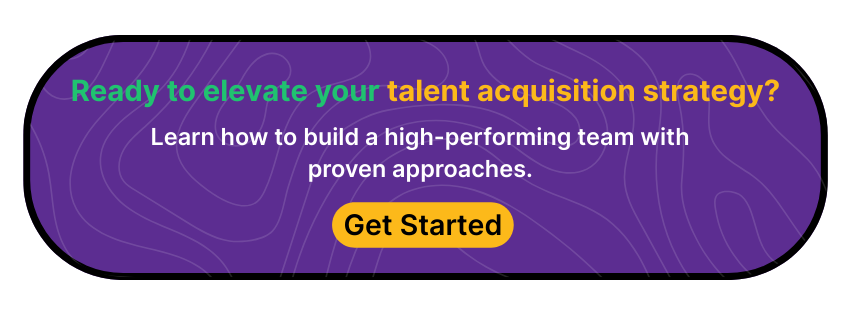
Implementing Your Talent Acquisition Strategy: A Leader’s Blueprint
Okay, so actually putting these strategies into practice? That requires intentional leadership and a clear plan, honestly. It’s not quite enough just to understand the ideas; you really have to weave them into how your TA team operates and into the company culture itself. This implementation phase is where the rubber meets the road, right? A leader’s role here is to champion the change and make sure the necessary support is there.
Start by taking a good look at where you are right now. What are you already doing well in these five areas? Where are the gaps? Try to identify the most critical things that need attention right away. Prioritize your efforts based on what will likely have the biggest impact and what’s actually doable. Trying to do everything at once is usually just overwhelming; a phased approach often works much better.
Set clear goals and Key Performance Indicators (KPIs) for your implementation efforts. How will you actually know if you’re succeeding? This should go beyond just the raw hiring numbers. Think about metrics like improving Quality-of-Hire, cutting down Time-to-Hire for certain roles, seeing higher candidate satisfaction scores, or maybe improving employer brand sentiment. Make sure these KPIs connect back to your overall business objectives.
Choosing the right tools and technology is a really important step. As we talked about, HireOquick offers features that can support various parts of these strategies, from managing candidates and running assessments to using AI for certain tasks. Evaluate solutions based on how well they fit with your strategic goals and if they integrate reasonably well with the HR systems you already use. Technology should make your process easier, not harder.
Getting buy-in from people across the organization is absolutely essential. You’ve got to educate hiring managers, executives, and employees on why these strategies matter. Explain how having a stronger employer brand, giving candidates a better experience, and building talent pools helps everyone. Their cooperation is really vital for success, especially when it comes to things like interviewing and getting employees to talk positively about the company. Implementation is really an ongoing process, too. Keep monitoring your performance against those KPIs, get feedback, and adjust your strategies as the market or your business needs change. This kind of iterative approach helps ensure your TA strategy stays relevant and effective.
Overcoming Challenges in Talent Acquisition Management
Even when you have a really solid strategy in place, talent acquisition management definitely comes with challenges. Leaders just have to be ready to handle those common hurdles effectively. These obstacles can really slow things down and impact your ability to bring in top talent. Being proactive about managing these challenges? That’s a real sign of strong leadership, I think.
Some common challenges you’ll probably run into include:
- Budget Constraints: Let’s face it, limited money can affect everything from where you advertise jobs to the tech you can invest in.
- Limited Resources: Smaller TA teams might just struggle to handle a high volume of hiring or try to implement complex strategies.
- Resistance to Change: Trying to get people to adopt new processes or technology can sometimes meet internal opposition.
- Intense Competition: It’s tough out there sometimes, battling other companies for the same talented pool of people.
- Defining Quality: Clearly figuring out what “quality hire” actually means for different roles and how you’re going to measure that.
- Lack of Stakeholder Alignment: When hiring managers maybe aren’t following processes or aren’t prioritizing TA efforts the way you need them to.
Having strong talent acquisition management practices in place really helps mitigate these issues. Using data, for instance, helps you show the return on investment to justify asking for more budget. Efficient processes and technology (like the automation you get with platforms such as HireOquick) help teams do more with less. Good change management and clear communication can help with resistance. Building a strong employer brand helps you stand out when competition is fierce. Defining quality? That really requires people from different parts of the company working together.
The importance of your team structure and their skills really can’t be overstated. Make sure your TA team has the right mix of abilities – they need to be good at sourcing, great communicators, able to look at data, and understand the business side of things. Invest in helping them develop professionally. Empower your TA team to be actual strategic partners, not just the folks doing the admin work.
Measuring Success and Demonstrating ROI
Implementing these strategies? It’s definitely an investment. Leaders really need to measure their impact and show the return on investment, the ROI, to the executive team and the wider organization. This is how you prove the value of having a strategic talent acquisition strategy and getting management right. Measuring things actually validates what you’re doing and justifies keeping that investment going.
Going back to the KPIs you set up earlier during the planning phase is key here. Keep track of metrics like Time-to-Hire, Cost-per-Hire, Quality-of-Hire, Candidate Satisfaction, how many offers are accepted, and if new hires are staying with the company. These numbers give you concrete proof of improvement. Comparing the data from before and after you put a new strategy in place (maybe implementing a CRM or a new assessment tool) really shows if it worked.
Reporting on how effective TA is should be clear and easy to understand, and crucially, it should be tied back to business results. Don’t just throw a bunch of numbers out there. Explain what they actually mean for the company. For example, explain how cutting down Time-to-Hire means people are getting productive faster. Show how improving Quality-of-Hire positively affects team performance and maybe even innovation. Demonstrate how having a really good employer brand can reduce marketing costs. Linking those TA metrics directly to what the business cares about really reinforces how strategically important the function is.
Frequently Asked Questions (FAQs)
H3: What is the difference between recruitment and talent acquisition?
You can think of recruitment typically as a more transactional process, focused mainly on filling open jobs pretty quickly. Talent acquisition is more strategic, a longer-term thing focused on finding, attracting, and engaging candidates who actually fit with the company’s current and future needs and culture. You’re doing this even before a specific job might be open. It’s more about building relationships and those pipelines we talked about.
H3: How can technology improve talent acquisition?
Technology can really streamline things, like the application process or scheduling interviews. It helps track candidates better, gives you data to analyze, makes communication easier, and can even use AI for tasks like screening resumes or generating assessments. Tools like ATS, CRM, and assessment platforms (kind of like the features HireOquick offers) boost efficiency and help you make decisions based on data, not just guesswork.
H3: Why is candidate experience so important?
Candidate experience really affects your employer brand, the numbers in your recruitment funnel (like how many offers are accepted), and even how customers see you. If someone has a good experience, even if they don’t get the job, they’re left with a positive feeling and might apply again or tell others. A bad one can really hurt your reputation.
H3: How can a small company implement these strategies with limited resources?
If you’re a smaller company, you can start by picking one or two key areas to focus on first. Maybe that’s really working on defining a strong employer brand or specifically trying to make your current hiring process’s candidate experience better. Using affordable or scalable technology solutions can help, and really pushing employee referrals can also be a very effective way to start. Prioritizing where you put your limited resources is definitely key.
H3: How do you measure the Quality of Hire?
Measuring Quality of Hire often involves looking at several things after someone is hired. You can look at their performance reviews, how long they stay with the company (maybe after 6 or 12 months), get feedback from their manager and team, and see how they’ve contributed to team or company goals. Combining a few of these metrics usually gives you a more complete picture than just looking at one.
Conclusion
So, getting really good at talent acquisition? It feels absolutely essential for leaders navigating today’s complex world. It’s a strategic necessity, really, that directly impacts whether your organization can innovate, compete effectively, and actually grow. By focusing on building a really appealing employer brand, using data wisely, making candidate experience a priority, proactively building those talent pools, and smartly using technology, leaders can definitely build the kind of high-performing teams needed to achieve their strategic goals.
Effective talent acquisition strategy and talent acquisition management? They’re definitely ongoing journeys, not something you just finish. They need constant learning, adjusting, and investment. The leaders who really put these strategies front and center are, I think, going to be in the best position to attract the talent they’ll need to truly thrive in the future. And really, building a world-class workforce all starts with having a world-class approach to talent acquisition.

